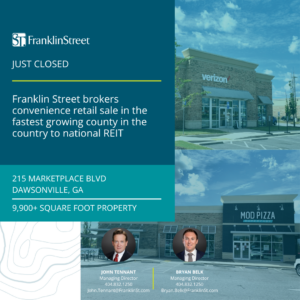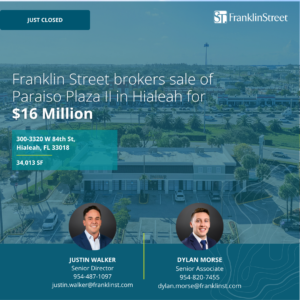IRVINE, CA—Properties in and near Millennial-friendly core business districts of secondary cities represent value-add potential, Sperry Van Ness’ VP of organizational development Solomon Poretsky tells GlobeSt.com. We spoke exclusively with several experts in value-add and opportunistic investments to get their take on where the greatest opportunities lie in this category. Here, their thoughts and predictions. And stay tuned for a more in-depth look at the value-add and opportunistic-investments sector in the June issue of Real Estate Forum.
GlobeSt.com: Where do the greatest opportunities lie in value-add and opportunistic investments?
Poretsky: I’m still very excited by the emergence of the 18-hour city as identified by ULI back at the beginning of the year. Assets in and near the Millennial-friendly CBDs of these secondary cities represent real opportunities to go in, update and add value. I love buildings with open spaces. Regardless of the property type, more creatively designed spaces are becoming increasingly desirable. Blank-slate buildings offer room to create without having to pay for existing buildouts and for the cost of demolishing them.
Jim Shelton, vice chairman, Carter: The greatest opportunities lie in asset classes where there is still a gap in two places. The first is on the acquisition side, where there is a gap between market rents and new-construction replacement-cost rents. The second is in the development arena, where there is very strong rent growth. If you believe you are in a growth market where year-over-year rent is growing 5% to 7% and absorption is very high, you can rationalize development.
Jon Pharris, co-founder and director of acquisitions, CapRock: In industrial, each individual submarket is unique. In Orange County, lease rates are increasing, so anything with short-term roll could be attractive. The office market is recovering, so converting an older industrial building into a more contemporary layout by increasing parking or removing square footage is an opportunity. There is also pend-up demand for smaller owner-users less than 10,000 square feet to acquire their own building, and it is difficult to build new buildings that small, so converting multi-tenant for-lease projects into for-sale products is a successful niche. CapRock has successfully implemented all of these strategies in Orange County over the past 18 months.
L.A. infill is another area of opportunity. The L.A. market is the tightest industrial market in the country, so it is difficult to find value-add opportunities because there are frequently owner-users who will pay more than an investor can justify. And, many of the buildings are older and smaller, so finding scale can be difficult, but when an opportunity is uncovered, it can be well worth it.
In the Inland Empire, many of the buildings are newer, and there is less opportunity for “pure” value-add. CapRock has had success in the I.E. for value-add by purchasing buildings with excess land or taking appropriate entitlement risk.
Robert Dougherty, partner, Buchanan Street Partners: Buchanan prefers to measure the “greatest opportunities” in terms of risk-adjusted vs. absolute returns. Naturally, more return comes with taking greater risk. However, we see a compelling opportunity in the “forgotten middle.” Capital raising has taken on a “barbell effect,” with institutional investors flocking to core on one end and high-value-add-to-opportunistic strategies on the other end of the continuum. As a result, less competition prevails in the core-plus-to-low-value-add arena, where investors can earn 11% to 13% net leveraged IRR returns (8% to 10% unleveraged IRRs). High-quality properties in primary (but not “gateway”) cities can be purchased with strong current cash flow at 30% to 35% discounts to replacement cost. Value-creation activities for these properties include lease-up, marking below-market rents to market and modest renovation/repositioning. All the while, these investments generate strong cash flow, creating a balanced return profile with profits composed of roughly 50% current cash flow and 50% asset appreciation. We also see less competition and, thus, enhanced returns in “middle market” properties valued at $30 million to $80 million. These tend to be beyond the reach of private buyers and syndicators, yet below the radar of the mega-funds, which have captured such a massive share of institutional capital in the current cycle.
Bryan Belk, director, Franklin Street Real Estate Services: Many opportunities lie in the suburbs of major markets where stores have closed and active tenants like Walmart Neighborhood Market, Hobby Lobby, Academy Sports, etc., can backfill retail spaces with strong credit and immediately create value for a center.
David Schwartz, CEO and founder, Waterton Associates: There is no thematic opportunity where markets and values fully recovered past prior peak. There’s been a lot of asset inflation. For us, it’s back to basics. We have bought in prior cycles at this stage, but it’s a matter of finding something with a lot of value left, whether it’s the rent roll or the NOI level is far below its potential. That’s what we try to find: opportunities where we have the best chance of bringing that rent roll and NOI to maximum potential. We also create value in residual by doing smart value-add to a property to bring down the residual cap rate for the next buyer. If we do those two or three things, and hopefully we’ve picked the right market with good growth rates and turned it into core-plus, then the next buyer gives you a better cap rate than what you’d get today. That’s value-add 101.



